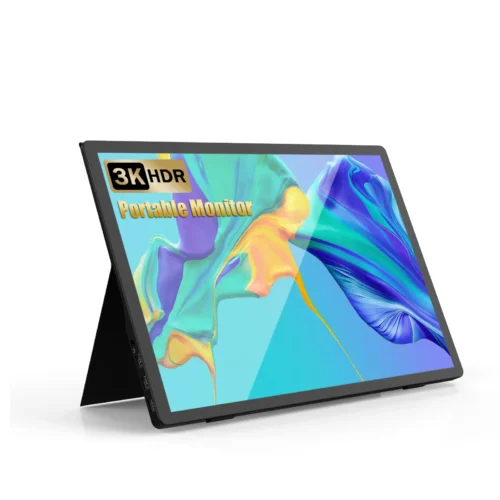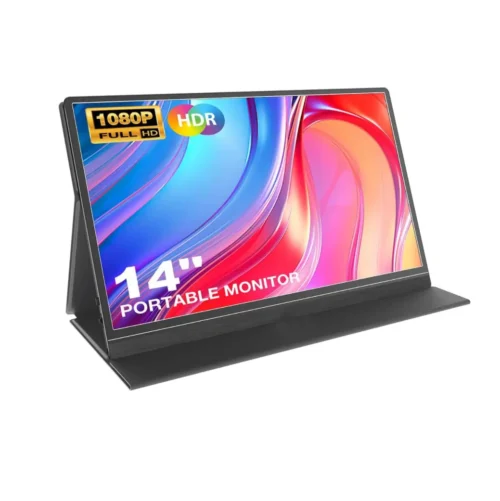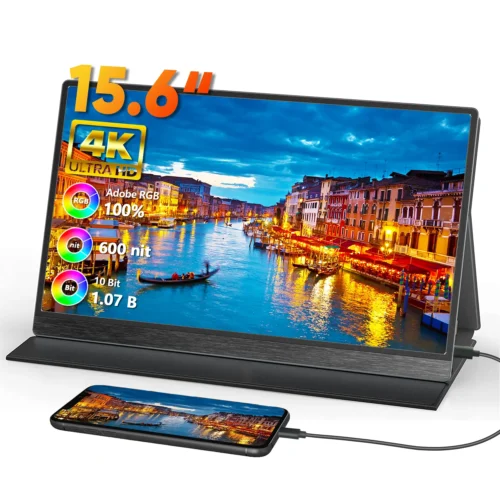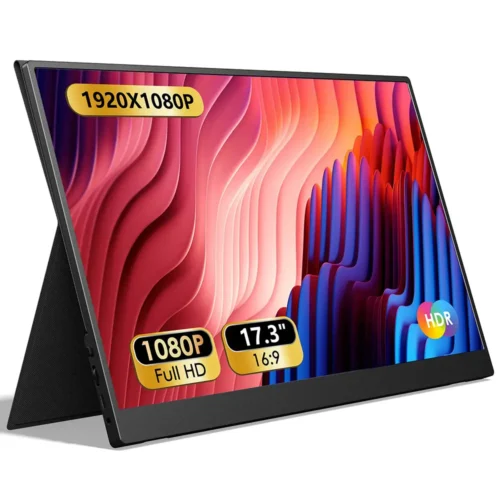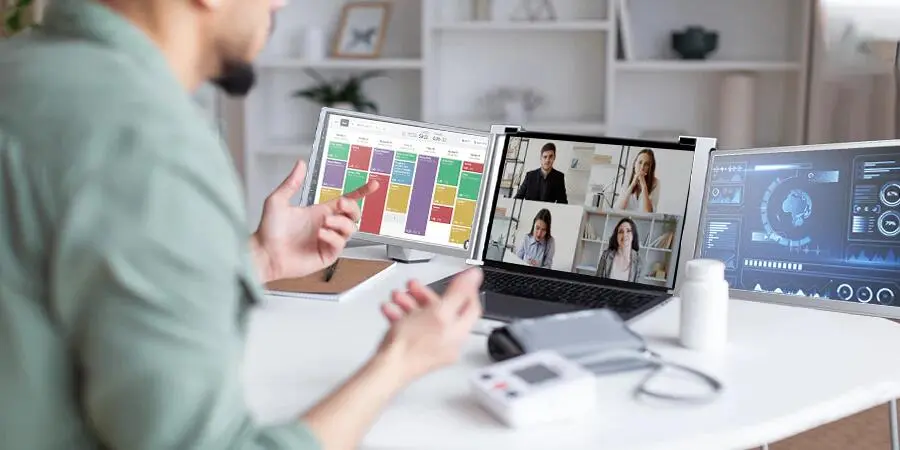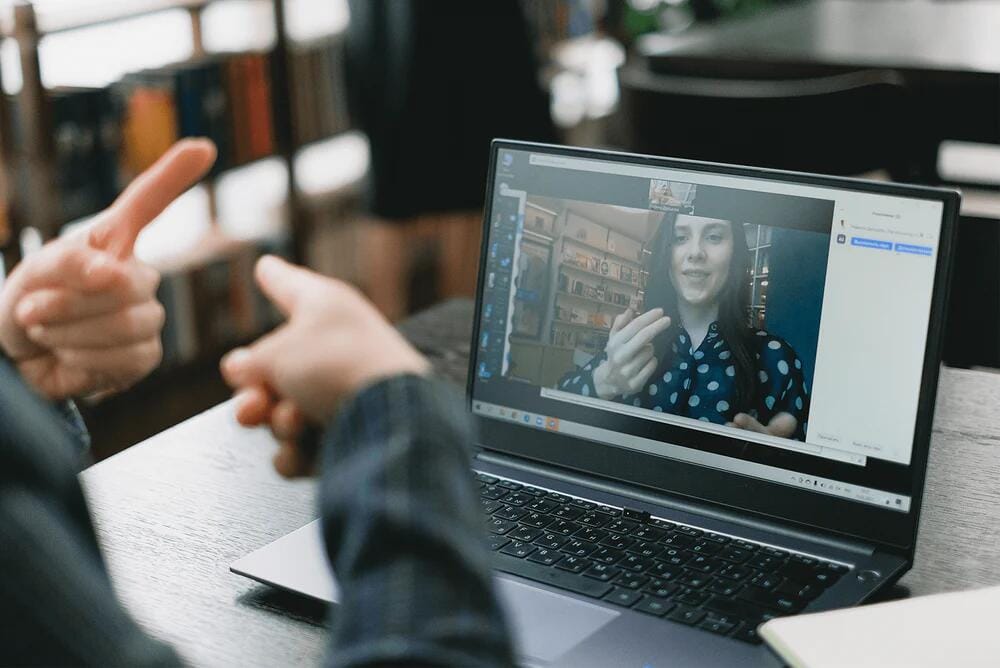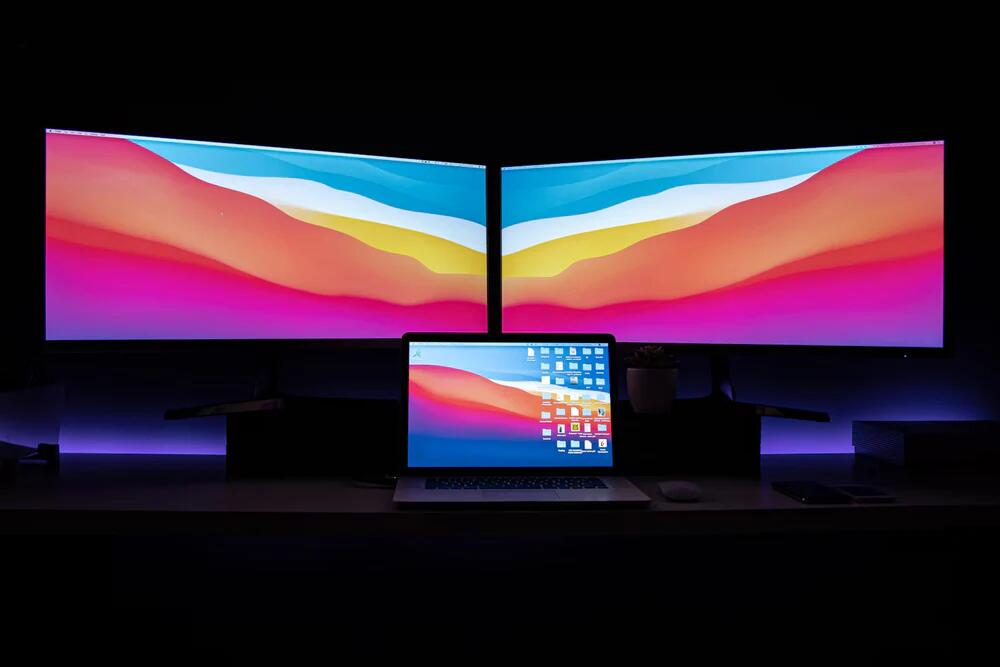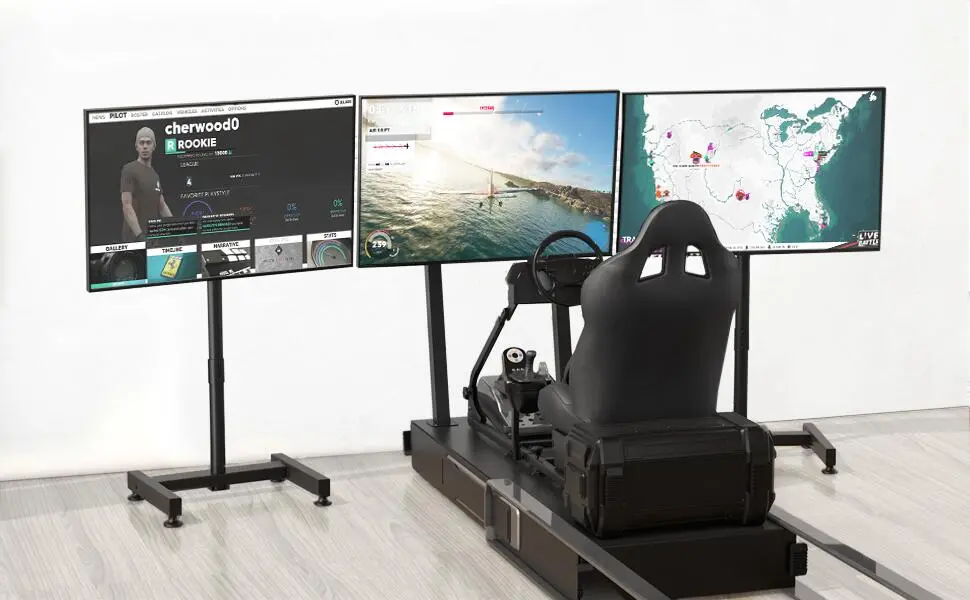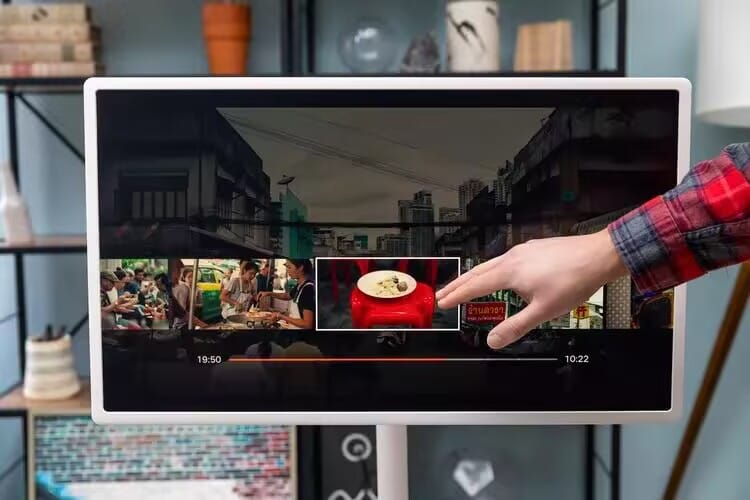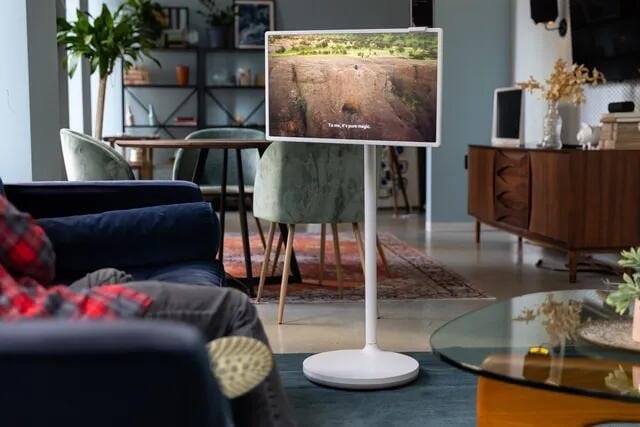Laptop screens often feel like a compromise: too small for multitasking, yet tethered to the device’s portability. If you’ve ever squinted at a 13-inch display or wrestled with overlapping windows, you’re not alone. A portable monitor for laptops promises to fix this, adding space without sacrificing mobility. Could it really solve your screen size woes?
Why Does Laptop Screen Size Cause Problems?
Most laptops ship with screens between 13 and 15 inches, a size that balances weight and function but cramps your digital workspace. Open a document and a browser, and you’re switching tabs back and forth. A 2022 study by Jon Peddie Research discovered single-screen users sacrifice 20-30% of their productivity switching apps, an aggravation that multiplies with processes such as coding or video editing. Smaller screens also put a strain on your eyes—text gets smaller, details are harder to make out, and long sessions wear you out sooner. For travelers or remote workers, this limitation is even more suffocating in confined areas like airplanes or cafes.
How Does a Portable Monitor Address Screen Size?
A portable monitor addresses this directly by adding a second screen. It is typically 15-17 inches, 1.5-2 pounds, and connects via USB-C or HDMI, doubling your screen space. A laptop portable monitor opens up your desktop—leave email on one, research on the other. At 1080p resolution and 250-300 nits brightness, it’s as good or better than most laptop displays, using a mere 10-15 watts from your device or bank. A 15.6-inch model combined with a 13-inch laptop creates a 28-inch workspace, so a compact setup is a viable hub.
This expansion isn’t just about size. IPS technology delivers 100% sRGB color precision and 178-degree viewing angles, so images stay sharp from every seat. A 2023 TechRadar survey showed 65% of users felt two screens reduce workflow stress, proving the solution isn’t hypothetical—it’s real-world.
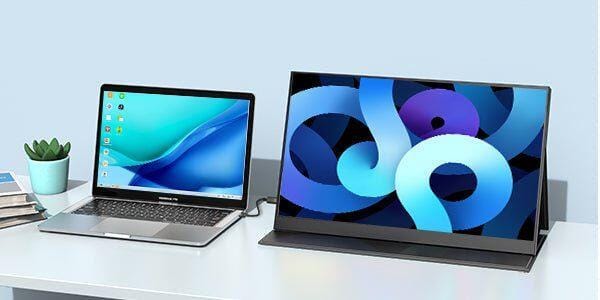
Can It Solve Travel-Related Screen Limitations?
Travel compounds screen size problems—laptops look tiny on tray tables or hotel counters. A travel monitor enters with portability and power. It is 0.4 inches thick and fits into carry-on bags, and an adjustable folding stand is compatible with any surface. It is powered by a 20W power bank for 6-8 hours, and a 15-inch 1080p monitor enables you to work or view comfortably in flights. A 300 nit brightness minimizes cabin glare, and it has a protective sleeve for safety during carriage.
Does it hold up? Yes, for most. An editor on a flight editing a presentation gets room to spread out slides and notes, something not possible on one 14-inch screen. The catch? It takes power—battery-free models draw from your laptop or a bank, so plan ahead off-grid.
Does Touchscreen Add a Real Solution?
A portable monitor with touchscreen does more than size, tackling usability. It includes 10-point multi-touch and 10-20ms latency, mimicking tablet control—tap to open programs, swipe to scroll, or annotate with a stylus (up to 4096 pressure levels on some models). It’s the indirect input solution: no mouse necessary, just your fingers. For a student, it’s a cramped note-taking solution—annotate lecture slides directly. For creatives, it’s a canvas—sketch on one screen and reference on your laptop.
Power usage is still 10-15 watts, so touch doesn’t use extra power. A survey by CNET in 2022 found 40% of users preferred touchscreens for hands-on tasks, which means it’s a valuable addition when screen size alone isn’t enough.
Will It Solve Problems with Everyday Laptop Use?
Screen size limitations hit daily use as well—streaming, browsing, or gaming on a small screen is less engaging. A portable monitor solves this with a bigger, brighter view. A 15-inch 1080p screen with 16.7 million colors via IPS technology beats a 13-inch laptop for Netflix, and 60Hz handles casual gaming like indie games. At home, it works as a recipe book or photo viewer, tilting via a 0-90-degree stand. Travelers gain a portable movie theater, easing long layovers.
The display is suitable for daily use—300 nits and wide angles ensure it’s viable indoors. It won’t replace a 4K TV, but for laptop-limited tasks, it’s a clear win.
How Do You Put It to Work to Fix the Problem?
Acquiring a portable monitor goes a long way in fixing screen size issues. Follow these steps:
- Verify Ports: Ensure your laptop includes USB-C (DisplayPort Alt Mode) or HDMI.
- Connect: Use USB-C for power and video together in one, or HDMI with power over USB.
- Configure: Press Win+P on Windows and select “Extend”; on Mac, go to System Preferences > Displays > Arrangement.
- Power It: Plug into your laptop or 20W bank (6-8 hours at 15W).
- Test: Drag a window between displays to verify alignment.
Touch models automatically install drivers through USB, allowing immediate use. Installation is 5 minutes, addressing your size issues with little hassle.
Does the Technology Live Up to Expectations?
Technology backs the solution. A 1080p at 10-15 watts keeps it within efficiency, while 4K offerings (20-25 watts) handle detailed work. Brightness of 250-300 nits suffices for most interiors, and IPS ensures color accuracy—critical for media or design. Touchscreens add no power load, while USB-C 5 Gbps bandwidth transfers video without hitch. Heat stays minimal (90-100°F), and a 0.4-inch frame can take travel wear. It’s built to solve the problem, not band-aid it.
Can It Fit Your Specific Needs?
In fact, across lifestyles. Students share study materials, cutting prep time by 15% based on a 2021 Educause study. Travelers with a travel portable monitor turn tight spaces into workstations. Creatives sketch with touch, and home users enjoy bigger entertainment. A 17-inch version weighs 2 pounds at most, portable for most, with stands that adjust to any angle. It’s a custom solution—your screen size issue, solved your way.
Are There Limits to the Solution?
A few obstacles still stand. Brightness tops out at 350 nits, so outdoor glare might linger. Touch isn’t default—check it’s part of the deal. Battery-free models require a source, and bandwidth gets halved with hubs (e.g., 5 Gbps to 2.5 Gbps per device). These seldom get in the way of the essential fix: greater room, increased control. In a 2023 TechSpot report, 70% of users considered portable monitors “essential” to laptop upgrades, outstripping minor drawbacks.
How Can You Make It Work Best?
Maximize it with these tips:
- Match resolution to use—1080p for basics, 4K for precision.
- Carry a 20W bank for travel.
- Clean with microfiber; store in its sleeve.
- Update firmware for peak performance.
A portable laptop monitor solves your screen size problem with space, touch, and mobility. We at Onext design these to remove your frustrations—sharp, light, and ready. Plug one in, and take back your laptop’s potential.
Recommend Products
13.5 Inch FHD 3K Portable Displays Screen Slim Lightweight HDR Travel Monitor for external monitors for Laptop Xbox PS5 Switch
14.0″ Ultra Slim Monitor FHD 1080P External Display with Dual Speakers Second Screen for Laptop PC Phone Xbox PS4/5 Switch – A1 GAMUT Slim
15.6 Inch FHD 1080P Portable Displays USB C HDMI External Display for Laptop Second Monitor
15.6″ 4K External Display Travel Monitors Unleash Mobile Productivity With HDR And USB-C HDMI Connectivity
17.3” USB Portable Monitor 1080P Full HD IPS, 60Hz, USB Type-C, Eye Care, HDMI Port, FSC Certified
Portable Large Monitor-18.5 Inch Computer Gaming Display 60Hz 100% sRGB FHD 1080P USB-C HDMI IPS Screen for Laptop
